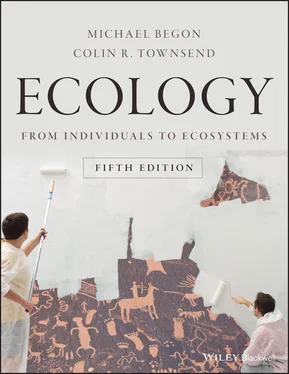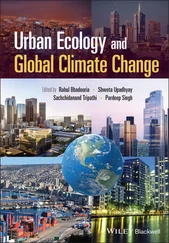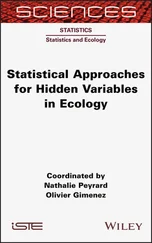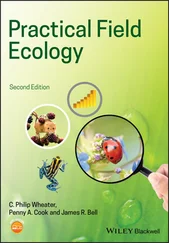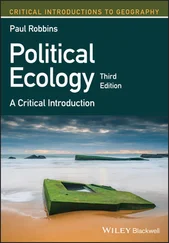(4.6) 
and in general terms:
(4.7) 
and:
(4.8) 
R , R 0and T
Equations 4.7and 4.8link together population size, rate of increase and time; and we can now link these in turn with R 0, the basic reproductive rate, and with the generation length (defined as lasting T intervals of time). In Section 4.6.1, we saw that R 0is the multiplication factor that converts one population size to another population size, one generation later, i.e. T time intervals later. Thus:
(4.9) 
But we can see from Equation 4.8that:
(4.10) 
Therefore:
(4.11) 
or, if we take natural logarithms of both sides:
(4.12) 
r , the intrinsic rate of natural increase
The term ln R is usually denoted by r , the intrinsic rate of natural increase . It is the rate at which the population increases in size – the change in population size per individual per unit time. Clearly, populations will increase in size for r > 0, and decrease for r < 0; and we can note from the preceding equation that:
(4.13) 
Summarising so far, we have a relationship between the average number of offspring produced by an individual in its lifetime, R 0, the increase in population size per unit time, r (= ln R ), and the generation time, T . Previously, with discrete generations (see Section 4.5.2), the unit of time was a generation. It was for this reason that R 0was the same as R .
4.7.2 Estimating the variables from life tables and fecundity schedules
In populations with overlapping generations (or continuous breeding), r is the intrinsic rate of natural increase that the population has the potential to achieve; but it will only actually achieve this rate of increase if the survivorship and fecundity schedules remain steady over a long period of time. If they do, r will be approached gradually (and thereafter maintained), and over the same period the population will gradually approach a stable age structure (i.e. one in which the proportion of the population in each age class remains constant over time; see below). If, on the other hand, the fecundity and survivorship schedules alter over time – as they almost always do – then the rate of increase will continually change, and it will be impossible to characterise in a single figure. Nevertheless, it can often be useful to characterise a population in terms of its potential, especially when the aim is to make a comparison, for instance comparing various populations of the same species in different environments, to see which environment appears to be the most favourable for the species.
The most precise way to calculate r is from the equation:
(4.14) 
where the l xand m xvalues are taken from a cohort life table, and e is the base of natural logarithms. However, this is a so‐called ‘implicit’ equation, which cannot be solved directly (only by iteration, usually on a computer). It is therefore customary to use instead an approximation to Equation 4.13, namely:
(4.15) 
where T cis the cohort generation time (see below). This equation shares with Equation 4.13the advantage of making explicit the dependence of r on the reproductive output of individuals ( R 0) and the length of a generation ( T ). Equation 4.15is a good approximation when R 0≈ 1 (i.e. population size stays approximately constant), or when there is little variation in generation length, or for some combination of these two things (May, 1976).
We can estimate r from Equation 4.15if we know the value of the cohort generation time T c, which is the average length of time between the birth of an individual and the birth of one of its own offspring. This, being an average, is the sum of all these birth‐to‐birth times, divided by the total number of offspring, i.e.:

or
(4.16) 
This is only approximately equal to the true generation time T , because it takes no account of the fact that some offspring may themselves develop and give birth during the reproductive life of the parent.
Thus Equations 4.15and 4.16allow us to calculate T c, and thus an approximate value for r , from a cohort life table of a population with either overlapping generations or continuous breeding. In short, they give us the summary terms we require. A worked example is set out in Table 4.3, using data for the barnacle Balanus glandula . Note that the precise value of r , from Equation 4.14, is 0.085, compared with the approximation 0.080; whilst T , calculated from Equation 4.13, is 2.9 years compared with T c= 3.1 years. The simpler and biologically transparent approximations are clearly satisfactory in this case. They show that since r was somewhat greater than zero, the population would have increased in size, albeit rather slowly, if the schedules had remained steady. Alternatively, we may say that, as judged by this cohort life table, the barnacle population had a good chance of continued existence.
Table 4.3 A cohort life table and a fecundity schedule for the barnacle Balanus glandulaat Pile Point, San Juan Island, Washington, USA. The computations for R 0, T cand the approximate value of r are explained in the text. Numbers marked with an asterisk were interpolated from the survivorship curve. Source : After Connell (1970).
| Age (years) x |
a x |
l x |
m x |
l xm x |
xl xm x |
| 0 |
1 000 000 |
1.000 |
0 |
0 |
|
| 1 |
62 |
0.0000620 |
4600 |
0.285 |
0.285 |
| 2 |
34 |
0.0000340 |
8700 |
0.296 |
0.592 |
| 3 |
20 |
0.0000200 |
11 600 |
0.232 |
0.696 |
| 4 |
15.5* |
0.0000155 |
12 700 |
0.197 |
0.788 |
| 5 |
11 |
0.000110 |
12 700 |
0.140 |
0.700 |
| 6 |
6.5* |
0.0000065 |
12 700 |
0.082 |
0.492 |
| 7 |
2 |
0.0000020 |
12 700 |
0.025 |
0.175 |
| 8 |
2 |
0.0000020 |
12 700 |
0.025 |
0.200 |
|
|
|
|
 |
 |

4.8 Population projection models
Читать дальше
